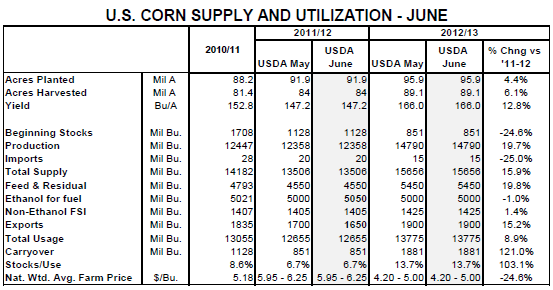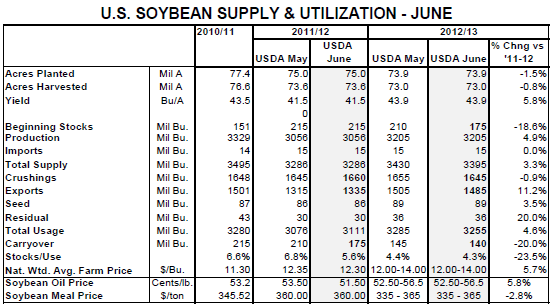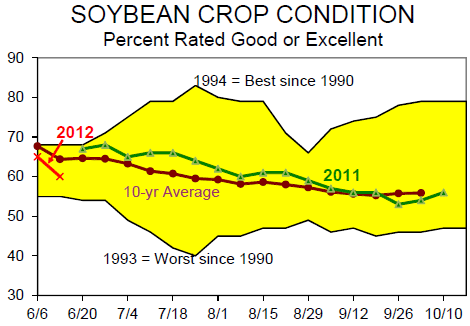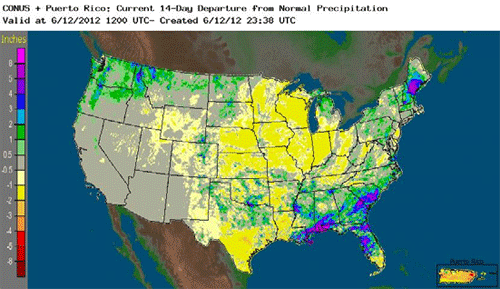



CME: June WASDE Report Contains Few Surprises
US - USDA’s World Agricultural Supply and Demand Estimates (WASDE) report for June contained few surprises and even fewer changes for old and new crop supply and utilization, write Steve Meyer and Len Steiner.Tables showing data as well as those from May for both corn and soybeans appear below.


The only changes made to May corn estimates were a 50 million bushel increase for 2011-12 ethanol usage and a decrease of the same amount for exports. Estimated 2012 carryout stocks remain at 851 million bushels, higher than analysts expected. USDA made no changes to its initial May estimates of 2012-13 corn supply and utilization in spite of growing concerns about moisture conditions in much of the Cornbelt. CME Group Corn futures were all lower at the close of pit trading on Tuesday with old crop July falling by $0.08/bushel and new crop contracts falling by 11 to 14 cents per bushel. The market had expected a downward adjustment for the average corn yield but it was left at 166 bushels per acre, about 2 bushels over the trend used by USDA. It is nearly 7 bushels higher than the longer 1960-2011 trend.

More changes were made to soybean supply and utilization estimates. Higher 2011-12 crushings and exports pushed year-end stocks for the current year downward by 35 million bushels. That reduction was largely offset by lower crushings and exports for the coming crop year and, while none of the changes were particularly large, the net effect was to push projected 2013 ending stocks to a VERY TIGHT 140 million bushels. That figure represents only 4.3 per cent of total usage or about 2.2 weeks worth of beans in bins at the end of the crop year. July soybean futures rose 10-1/4 cents. Other soybean futures rose by 2-1/4 to 6 cents per bushel.

The map below from the National Weather Service
shows that virtually all of the Cornbelt is 1 to 2 inches
behind on precipitation over the past two weeks. A related
map found at http://water.weather.gov/precip/ indicates that virtually
all of this area has received less than 75 per cent of its normal precipitation
over that time period with most receiving less than half and a
broad swath of Nebraska and Indiana getting less than 25 per cent.
About the only good news on the precipitation front is the heavy —
and sometimes too heavy — rainfall that has occurred in the
Southeast where drought conditions have been persistent for the
past two years.
These dry conditions were the primary driver of reductions
in the crop condition ratings for both corn and soybeans in Monday’s
Crop Progress report. The per centage of corn rated good or
excellent fell from 72 to 66, a level lower than both last year and
the 10-year average. The same categories for soybeans contained
60 per cent of acres this week versus 65 one week ago.
Cooler temperatures are reducing plant stress this week
but those are expected to last only through Thursday or Friday.
Current forecasts expect rain in the western Cornbelt on Friday.

Further ReadingYou can view the WASDE report by clicking here. |








